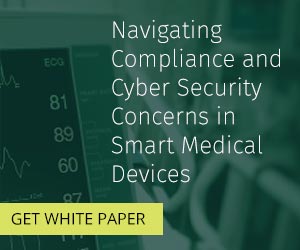Connected medical devices offer enormous opportunity for manufacturers and consumers alike. They also carry the burden of increased risk due to cybersecurity flaws. Think about the dangers of having your email or bank account hacked. Now consider the damage hacking a connected medical device or the information stored from it can do.
Medical information is some of the most sensitive information most people have. However, it’s not just the potential consequences of a database hack users of connected devices need to worry about. It’s also the spectre of an attack on the device itself — an attack that could easily be deadly.
Current FDA Guidelines
There’s already FDA guidelines for connected medical devices, most recently updated in October 2018 with its Medical Device Cybersecurity Playbook developed with Mitre. The guidance seeks to prevent both unauthorized access to data and protect the security of the device itself. There are a number of steps to protect end users, as well as company reputation:
- Identification: Threats and vulnerabilities to assets should be identified prior to manufacturing a device.
- Assessment: Both the impact of a threat and the likelihood of a threat must be assessed.
- Design: Balancing risk against mitigation, you must design a device meeting FDA standards to protect your end users.
- Monitoring: Your company must also monitor potential threats after the device goes to market to ensure the continued safety of the device.
 Medical device security isn’t an abstract problem. In October 2018, Medtronic Plc disabled all downloadable updates to connected pacemakers citing security issues. On a wider scale, the British National Health Service was effectively crippled by the WannaCry ransomware in April of the same year. Former Vice President Dick Cheney had his pacemaker disabled for fear of a hack.
Medical device security isn’t an abstract problem. In October 2018, Medtronic Plc disabled all downloadable updates to connected pacemakers citing security issues. On a wider scale, the British National Health Service was effectively crippled by the WannaCry ransomware in April of the same year. Former Vice President Dick Cheney had his pacemaker disabled for fear of a hack.
It’s worth noting that every point of connectivity in a medical device is a potential place for hackers to access a device. This is why the FDA has stringent standards for connected devices. In our next blog post we will discuss what to expect when going through your 510k approval process.
Next Steps
- Download the white paper about Navigating Compliance and Cyber Security in Smart Medical Devices
- Subscribe to our blog to stay informed on product development and engineering efficiency topics.
- Schedule a free consultation with a member of SPK and Associates today.







